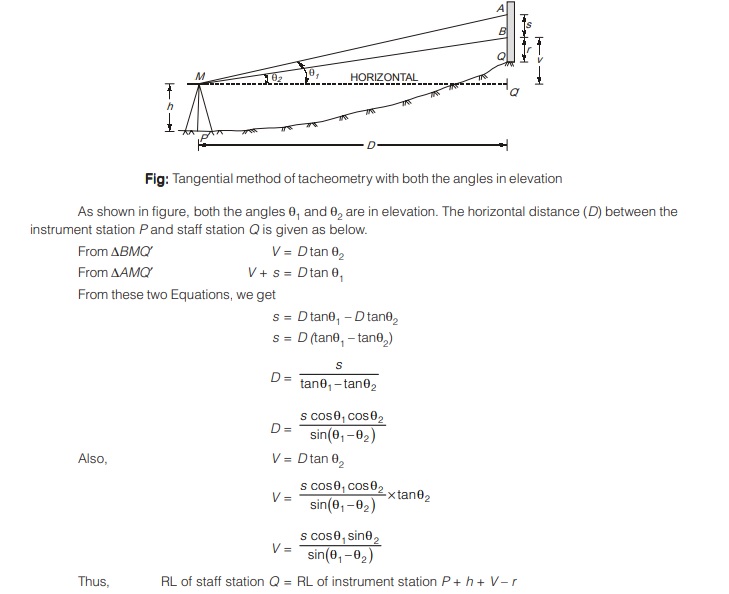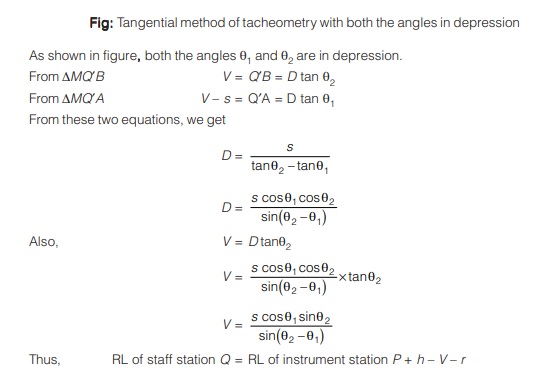TANGENTIAL METHOD OF TACHEOMETRY
- In the absence of stadia hairs, the tangential method of tacheometry is resorted to.
- This method is used when the staff is held too far from the instrument station and it is difficult to read the staff.
- Here the staff is fitted with two targets spaced at a fixed vertical distance (s) apart (say 2 m or 3 m). By sighting the two targets, the vertical angles Ø1 and Ø 2 are measured.
- From above three observations s, Ø1 and Ø2, the horizontal distance D and vertical intercept V is arrived at as per the following three cases as described below.
Case I: Both the Angles are at Elevation





Errors Due to Personnel Reasons
-
- Error due to faulty centering, levelling and bisections: If the tacheometer is not centered and levelled properly then errors may creep in.
- Error due to non-verticality of staff: Often the staff may not be held perfectly vertical due to which error incurs. A plumb bob provided with the staff ensures the verticality of staff.
- Error due to wrong reading of staff: The staff intercept if not read correctly then this introduces error. Thus it is always advisable to read the staff readings for all the three stadia wires and to check whether difference of readings of upper and middle stadia is equal to difference of readings of middle and lower stadia.
- Error due to faulty reading of vertical angle: Tacheometry also involves the measurement of vertical angle and the same should be done precisely otherwise appreciable errors may occur in the results.
Instrumental Errors
- Error due to faulty instrument constants: With continuous use of instrument (i.e., tacheometry), the instrument constants k and C may get changed. The erroneous effect due to this is cumulative in nature. Thus it is quite essential to verify the instrument constants regularly.
- Error due to imperfect adjustment of instrument: Certain adjustments of the instrument are done in factory only and thus if instrument is having fault in its factory production, then error may get introduced.
- Error due to stadia rod: Faulty divisions in stadia rod and improper standardization lead to errors.
Error Due to Natural Causes
- Wind: Very strong wind currents disturb the work and readings in field cannot be taken correctly. Apart from that, strong winds make it difficult to hold the staff truly vertical.
- Sun: In hot sunny days unequal expansion of instrument parts take place and is a source of error.
- Atmospheric refraction: Atmospheric refraction changes the path of line of sight thereby giving wrong staff readings. Thus for very long sights, read only the top and middle hair and multiply the difference of top and middle hair readings by two to get the staff intercept.
<< Previous | Next >>
Must Read: What is Surveying?
WhatsApp Group
Join Now
Telegram Group
Join Now

